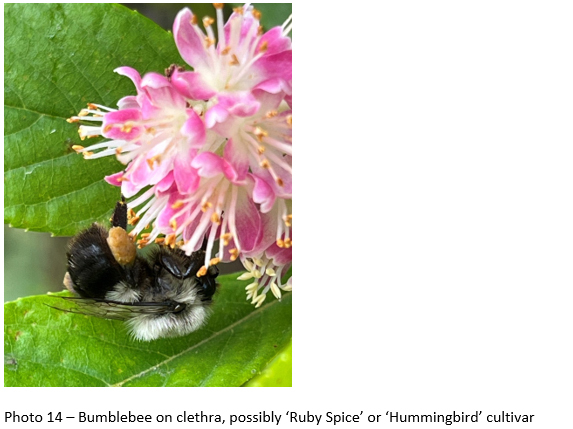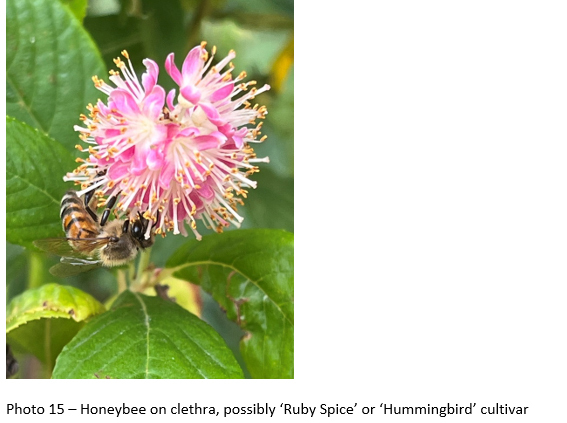
This informal report by the Division of Entomology & Plant Pathology is a commentary on insects, diseases, and curiosities division staff encounter on a week-to-week basis. Comments and questions about this report are welcome and can be sent to your respective Inspector.
Our Website
Inspector Territories
Eric Biddinger (Nursery Inspector & Compliance Officer) -
Saw a few unusual things over the last week. First is an unusual leaf feeding on honey locust. The damage was isolated to this tree. I haven’t figured this out yet.
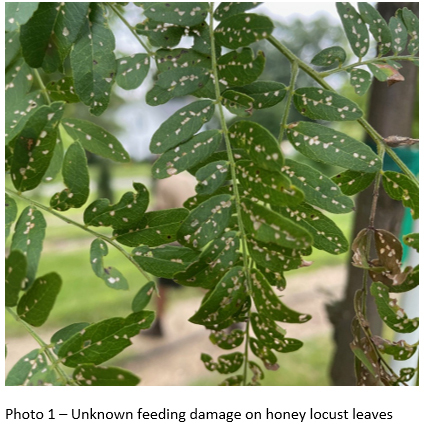
Next was a pretty heavy infestation of tuliptree scale which was, again, pretty isolated. Tuliptree scale is not unusual in itself, but it has been a while since I have seen this level of infestation in a nursery. The ants running up and down the trunk were the first indication that I needed to take a closer look.
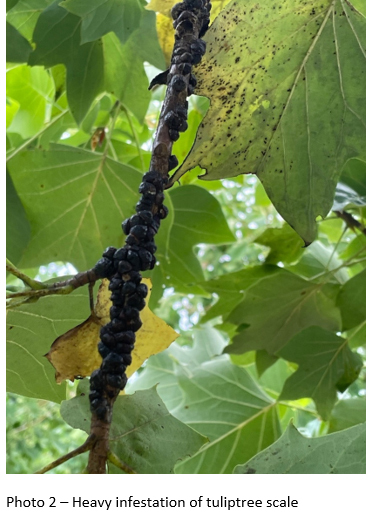
While bagworm is quite common on evergreens, it is a rarer occurrence to find them on deciduous trees. Here I found bagworm on beech. The damage was starting to get serious. Just another example of why you need to stay vigilant while scouting.

Finally another honey locust issue. The stem galls and leaf distortion were occurring on every locust this nursery received in this shipment leading us to believe the issue came from the supplier. PPDL said this looked just like Imprelis herbicide injury, but given this product was removed from sale in 2012, we have another mystery on our hands. The lesson here is that it is always beneficial to keep track of the sources of your nursery stock.
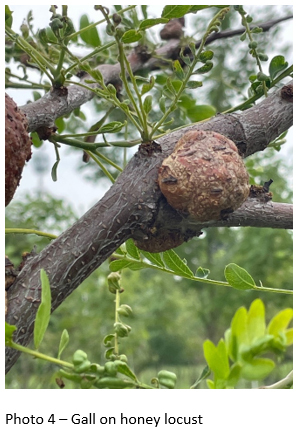
Angela Rust (Nursery Inspector & Compliance Officer) -
The imported willow leaf beetle (Plagiodera versicolora) is not native to North America and the exact native range in Europe and Asia is not known. These specimens were found on white willow and ‘Golden Corkscrew’ willow. Poplar and willow species are common hosts. Adults and larvae both feed on the leaves of trees. Larvae skeletonize the leaves and adults chew holes. These beetles overwinter in loose bark and other sheltered areas around the trees. Damage from feeding may cause leaves to turn brown and fall early. Several insecticides labeled for control of leaf beetles are effective in controlling heavy populations.
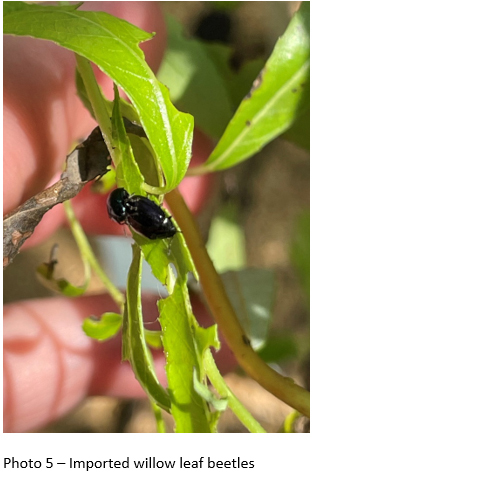
Jared Spokowsky (Nursery Inspetor & Compliance Officer) -
I saw a few things of interest this past week. The first was a nursery owner who called me about some white pines he wanted me to take a look at. The pines were sitting in a container yard had some needle discoloration and were showing signs of stress. The owner was told by a sales rep he should consider disposing of all the white pines because it was needle cast. Thankfully the owner wanted a second opinion. Upon arriving I found eight to ten (of about 50) white pine with bark beetle infestation which was causing pretty severe wilting. I found no other signs of disease and little to no sign of beetle attack on the healthy trees. This nursery had been having an issue getting adequate irrigation on their containerized material and this is what I suspect predisposed the trees to the beetle attack.
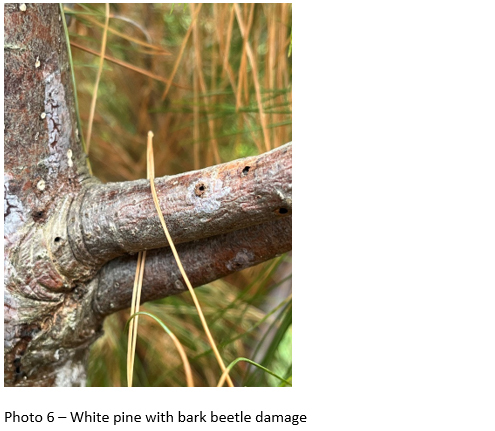
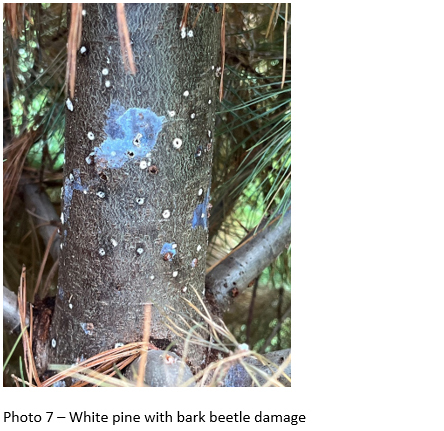
The next thing of interest was a red oak with a fairly substantial wound which could have been mechanical or disease-caused but had a copious amount of sap coming out. This was a hot spot for various insects feeding on the sap including horse flies, other smaller flies, yellow jackets, and bald-faced hornets. Upon closer inspection, it appeared the wound was moving, and it turned out that quite a few maggots were feeding in the sap. I had expected that I might find some sap beetles feeding in the wound. Sap beetles in the family Nitidulidae are attracted to wounds on oaks and are the primary means of spreading new pockets of oak wilt. Oak wilt will create fungal mats under the oak bark which are called pressure pads.
The pads will split the bark of the tree open where it begins to weep sap which attracts sap beetles. The beetles then come into contact with oak wilt spores which they can carry to an uninfected wounded tree, which can start a new pocket of wilt. A couple weeks back I had sent a sample of chestnut oak to the lab for a possible oak wilt infection which came back positive. Once established the primary means of controlling oak wilt is to remove infected trees and sever root grafts with a vibratory plow or trenching machine. Historically wound dressing paint was used to seal pruning wounds on trees. This practice is no longer recommended with the exception of pruning oak while sap beetles are active.
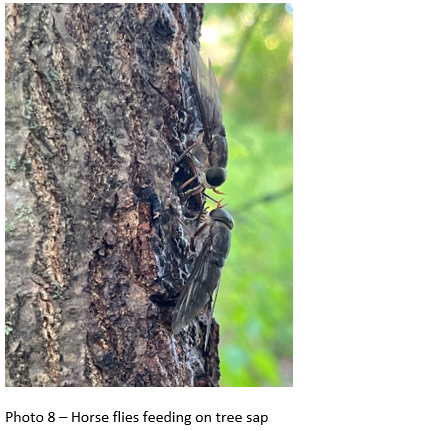
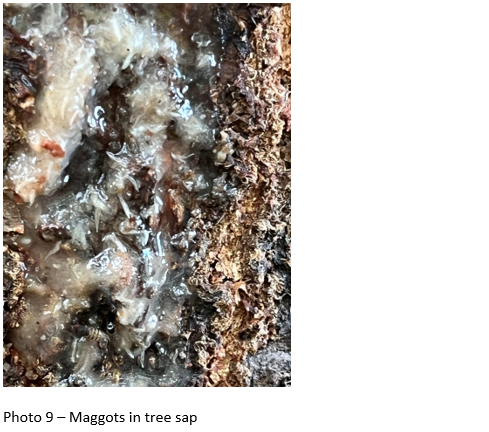
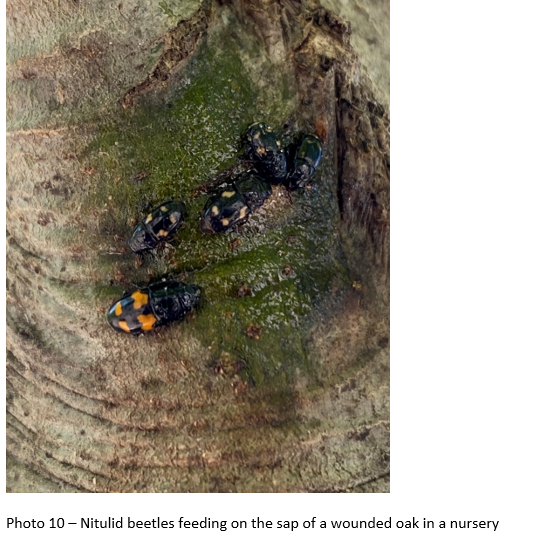
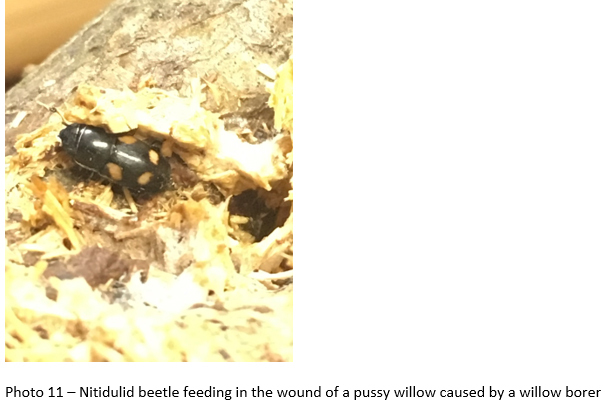
I also found a young example of one of our more unique plants, dodder. It is a parasitic plant, except a short-lived root system, which derives all of its nutrition from its host plant. Because of this, it is typically yellow to orange in color because it does not contain any chlorophyl.

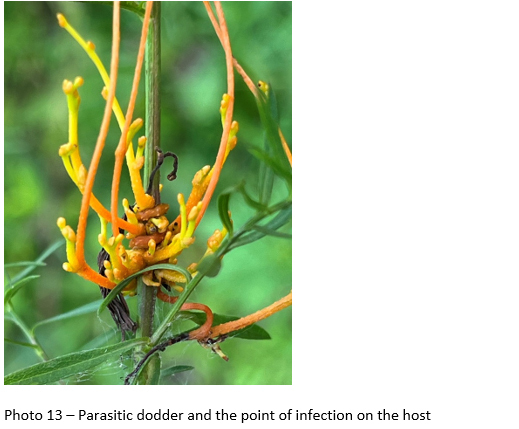
Lastly, I am still seeing quite a bit of bees actively foraging on various species. So far in SE Indiana, I wouldn’t say we are in a dearth yet because of all the rain. If you’re looking for another possibility to plant for bees you should take a look at Clethra alnifolia, also called sweet shrub or sweet pepper bush. Clethra is a small to medium shrub which is in full bloom now. It isn’t a powerhouse when it comes to honeybee attraction, but I see consistent activity on it along with other bees and butterflies. It produces a good show of small white to sometimes pink/reddish panicle flowers on some cultivars. It will tolerate heavy clay, shade, and wet soils. It struggles in drier areas with more sun exposure.
